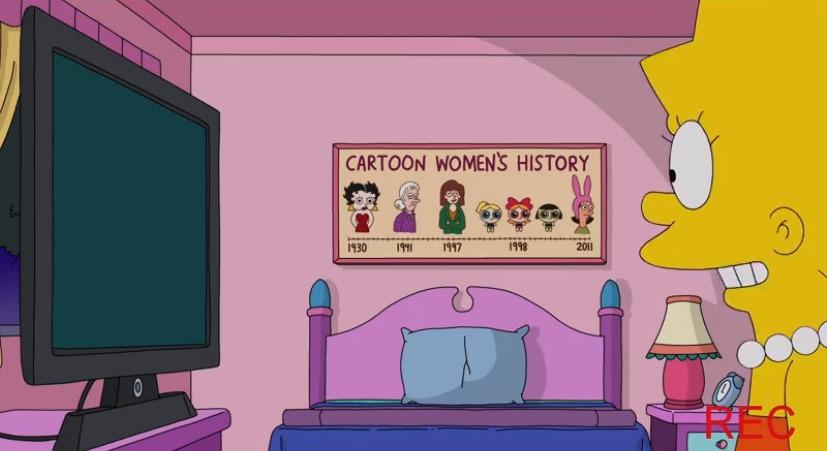Note: Enjoy this quick essay I wrote as a part of my grad school application! I wanted to write something a little less serious but still heartfelt as a part of my writing portfolio. I bounced around between topics, characters, and media in my head for a while before landing on my favorite girl, Lisa Marie Simpson. Let’s hope the admissions offices enjoy it, too!
When The Simpsons premiered in December 1989, I doubt that creator Matt Groening could have predicted even an ounce of the cultural impact that the series would have over the four decades it has aired. Even more dubious, if he heard that Lisa Simpson would become a role model for a young girl born in Iowa in the 90s, I bet he would have a question or two.
On paper, it may sound ridiculous that one of the consistent role models of my life has been a fictional eight-year-old girl. My sixth-grade English teacher laughed when I wrote that I aspired to “learn like Lisa” on a poster board meant to show her our goals for the year. But I was undeterred. I knew what she didn’t – that Lisa Simpson is one of the most influential characters on television.
Not one of the most influential animated characters. Not one of the most influential female characters. One of the most influential characters to ever be on television.

When the Simpson family was first shown on The Tracey Ullman Show in 1987, Lisa was her big brother Bart’s sidekick. They got into mischief together, driving their parents crazy as a team. This dynamic continued through The Simpsons first season. As a Simpsons fan would know, the series first revolved around the idea of Bart vs. Homer. Bart was the lovable rascal next door, and Homer was the hard-ass father who tried to keep him in line. Bart was essentially the main character of the show in these earliest seasons. He wouldn’t be for long, though.
The first Lisa-centric episode of the series occurs in 1×6, titled “Moaning Lisa.” It touches on heavy themes, including depression. We follow Lisa as she has a bad day at school, gets ignored at home, and sends herself to her room to decompress. While there, she hears the notes of music floating from her window. We are then introduced to one of Lisa’s role models, Bleeding Gums Murphy. Throughout the episode, we watch Lisa gain confidence and healthier coping mechanisms for her depression with music. It’s a stunning episode. Yeardley Smith, the voice of Lisa, says this episode is one of her all-time favorites.
From here on, whenever the show turns its focus to this middle child, Lisa is learning an important life lesson. In 3×2, “Mr. Lisa Goes to Washington,” she is exposed to political corruption. In 4×4, “Lisa The Beauty Queen,” she sees the horror of vanity and the dangers of the tobacco industry. In 5×14, “Lisa Vs. Malibu Stacy,” she fights against sexism, marketing, and corporate greed. In 6×2, “Lisa’s Rival,” she grapples with her pride and the human urge to compare herself to others.
I could go on and on, but I’ll resist. As you can see, there are many reasons why I wanted to learn like Lisa. She is unafraid to ask questions. She is brave enough to address the entire town, demand explanations, and present her ideas. She challenges corporations, small businesses, and people in power, holding them accountable for their actions. She doesn’t tamper down or hide her intelligence and passion from others. She lets herself live, big and loud, without fear of retribution.
Lisa is a fantastic role model. At 11, I aspired to learn like her. At 26, I can confidently say I am still learning alongside her.
